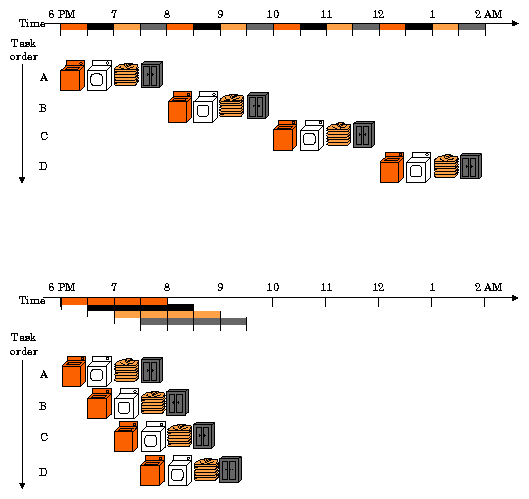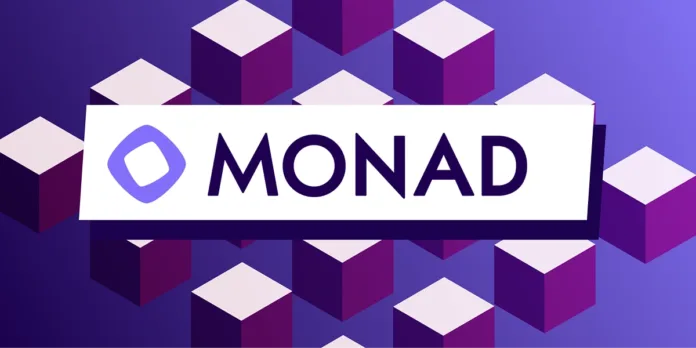Monad is poised as a transformative Layer 1 network, bringing a significant enhancement to blockchain scalability and efficiency [1]. At the core of its breakthroughs in technology, Monad cherishes the capacity to process a staggering 10,000 transactions per second, facilitated by its parallel execution model—an ambitious leap forward for smart contract platforms [1]. This capacity is what makes it so lucrative as currently the Gas prices on Ethereum is climbing towards sky and swap is costing over 80$ in gas fees.
This network’s meticulous architecture harmonizes with the Ethereum Virtual Machine (EVM), offering an effortless transition for developers entrenched in the Ethereum ecosystem [1]. As we explore Monad’s compelling contributions to blockchain innovation, we will unravel the robust MonadBFT consensus mechanism and its impact on transaction fluency, alongside the meticulous strategies underpinning its future developments and tokenomics [1].
Please read : Why Monad is not doing roll up instead of Layer 1
Table of Contents
Understanding Monad’s Vision

Monad is a EVM blockchain which promise amazing throughput as it can settle upto 10,000 transactions per second, promising to solve the famous scalability problem in the current Layer 1 available across the blockchain spectrum. The vision of Monad is multi-faceted, focusing on addressing fundamental challenges and setting a roadmap for the future development of blockchain technology. Here are the key aspects of Monad’s vision:
- High-Performance Layer 1 Blockchain:
- Monad is engineered to elevate the execution efficiencies of the Ethereum Virtual Machine (EVM) by integrating parallel execution, thus enhancing throughput and reducing compute costs for developers [2].
- With a goal to scale EVM to millions of users, Monad positions itself as a bridge between EVM-compatible blockchains and high-performance networks like Solana, ensuring high performance without an over-reliance on memory [2].
- Scalability and Transaction Throughput:
- Aiming to support mass user adoption, Monad envisions a platform capable of sustaining 50 million users and facilitating 10 times more transactions per user than current capabilities [6].
- The network achieves this by delivering rapid transactions with a speed of 10,000 transactions per second (TPS) and a one-second block time, potentially displacing Ethereum as the dominant smart contract platform [3][4].
- EVM Compatibility and Developer Onboarding:
- Monad is Ethereum-compatible, which allows for seamless integration for developers and users within the Ethereum ecosystem, removing the tradeoff between higher gas costs and composability [3][6].
- By closely resembling the native Ethereum computation layer, Monad facilitates easy onboarding for new apps and developers, fostering a new era of decentralized experiences [6]
The Unique Architecture of Monad
Parallel Execution and Pipelined Architecture:
- Monad introduces a novel approach to transaction processing with its parallel execution model, which divides smart contracts into smaller, independent units called threads, enabling concurrent execution [9].
- By adopting a pipelined architecture, Monad facilitates staggered processing of transactions, which mitigates the bottlenecks associated with sequential execution [15].
- The architecture capitalizes on superscalar pipelined execution, which allows for multiple instructions to be processed simultaneously, significantly boosting the network’s throughput [12].
Scalability and Efficiency:
- The shared transaction mempool is a core component of Monad’s architecture, which enhances scalability by allowing for increased transaction processing efficiency [10].
- Monad achieves an exceptional throughput of 10,000 transactions per second (TPS) and maintains a consistent one-second block time, demonstrating its capability to handle a growing volume of transactions and users [17][18][19].
- Through the use of advanced techniques like Optimistic Concurrency Control (OCC) and Software Transactional Memory (STM), Monad processes multiple transactions concurrently, thus optimizing the network’s overall performance [1].
Consensus Mechanism and Compatibility:
- The MonadBFT consensus mechanism is instrumental in ensuring seamless ordering and execution of transactions, providing immediate finality within each block [20][21].
- Monad’s execution phase for each block commences only after consensus is reached, thereby leveraging parallel execution for high-performance outcomes [11].
- Full compatibility with EVM bytecode and the Ethereum RPC API is preserved, enabling developers to effortlessly port their applications to this high throughput environment without the need for additional code development or audits [4][17][18][19].
Monad’s architecture is not only designed for productivity but is fundamentally optimized to bridge the gap between decentralized and traditional platforms, offering a high-performance solution that retains the benefits of decentralization [12]. With its testnet expected in Q2 2024 and Mainnet launch anticipated in late 2024, Monad stands poised to redefine the capabilities of EVM-compatible blockchains [14].
Cost-Efficiency and Performance:
- Transactions on Monad are significantly more cost-effective, with complex transactions that would typically cost a substantial amount on Ethereum, costing just a fraction of a cent, which represents a 100x reduction compared to leading Layer 2 solutions [16].
- The high-performance nature of Monad is further underscored by its ability to handle 10,000 transactions per second, showcasing its scalability and efficiency [6].
Seamless Developer Transition:
- Full compatibility with EVM bytecode and the Ethereum RPC API means developers familiar with Ethereum can easily migrate their applications to Monad [10].
- This EVM equivalence ensures that smart contracts on Monad function identically to those on Ethereum, providing a frictionless experience for developers transitioning to Monad’s platform [6].
EVM Equivalence Details:
- Monad’s EVM implementation aligns with the latest Ethereum updates, including the Shanghai fork, ensuring that historical Ethereum transactions yield identical outcomes on the Monad network [11].
- The platform’s transaction format is compatible with Ethereum’s 20-byte addresses and adheres to EIP-2718, encoded with RLP, while also supporting access lists (EIP-2930), although they are not mandatory [11].
- With Monad’s MonadBFT consensus mechanism, the network achieves rapid processing while maintaining EVM compatibility, making it an efficient choice for developers and users alike [3].
- Den-cun upgrade and proto-danksharding updates are yet to be implemented ( Ethereum’s 13th march updates) ( Read Here more about proto-danksharding and Ethereum’s Den-Cun Upgrade )
Consensus Mechanism in MONAD
Monad’s consensus approach, MonadBFT, is a sophisticated and efficient algorithm that plays a fundamental role in the network’s transaction processing capabilities. Here is an in-depth look at how this mechanism operates:
MonadBFT’s Structure and Process:

- Leader-based Agreement: At the heart of MonadBFT is a leader-based algorithm that ensures agreement on the order and inclusion of transactions under partially synchronous conditions [11].
- Two-Phase BFT Algorithm: MonadBFT operates as a pipelined two-phase Byzantine Fault Tolerance algorithm. This design allows for linear communication overhead in common scenarios, enhancing the network’s efficiency [11][23].
- Single-Slot Finality: The consensus mechanism is optimized to provide single-slot finality, meaning transactions achieve finality instantly within each block, a critical feature for a high-performance blockchain [3][11].
Round-Based Consensus and Validator Participation
- Consensus Rounds:
- In each round, the leader proposes a new block and provides a Quorum Certificate (QC) or a Timeout Certificate (TC) for the previous round [23].
- Validators review the proposed block for protocol adherence and, if in agreement, send signed YES votes to the next round’s leader. A QC is then derived from 2f+1 YES votes [23].
- Should a validator not receive a valid block within a specified time, they multicast a timeout message, which includes the highest QC they have observed. Accumulation of 2f+1 timeout messages results in the creation of a TC, sent to the next leader [23].
- Finalization of the block occurs when validators receive a QC for the subsequent round, ensuring the integrity and finality of transactions [23].
- Validator Nodes:
- The system is designed to operate with n = 3f+1 nodes, where f represents the maximum number of Byzantine nodes that can be tolerated, ensuring robustness against potential system failures or malicious attacks [23].
Certificates and Signature Schemes
- Efficient Certificate Implementation: MonadBFT utilizes BLS signatures on the BLS12-381 curve for certificates, allowing for aggregation of signatures into a compact form. This reduces certificate size significantly compared to traditional ECDSA signatures on the secp256k1 curve [23].
- Blended Signature Scheme: The consensus mechanism employs a blended signature scheme, using BLS signatures for messages that benefit from aggregation—such as votes and timeouts—to optimize performance [23].
Monad’s consensus mechanism, MonadBFT, is not only high-performance but also meticulously designed to ensure the network’s scalability and security. It is a derivative of HotStuff (Click here for the White paper), with enhancements from Jolteon/DiemBFT/Fast-HotStuff, which streamline the communication process by reducing the number of rounds from three to two in the event of leader timeout, further optimizing the consensus process [23]. Additionally, Monad’s LPoS mechanism includes a checkpointing system, adding an extra layer of security and stability to the network [24]. Through these advanced features, MonadBFT underscores the network’s commitment to providing a seamless, high-throughput, and secure blockchain experience.
Smart Contracts on Monad
Smart contracts on Monad are a critical component of its high-performance blockchain ecosystem, offering developers a familiar yet enhanced environment for decentralized application (dApp) development:
- Smart Contract Languages:
- Monad supports a variety of smart contract languages, such as:
- Solidity: The primary language for Ethereum smart contracts, known for its developer-friendly syntax and robust features [10].
- Vyper: An alternative to Solidity, Vyper focuses on simplicity and security, with a syntax similar to Python [10].
- Huff: A low-level smart contract language that allows for highly optimized and gas-efficient code, giving developers the ability to write extremely efficient smart contracts [10].
- Monad supports a variety of smart contract languages, such as:
In a nutshell you can deploy your smart contract to monad’s EVM and do the same thing as ethereum.
- Development Tools Compatibility:
- To facilitate a smooth development experience, Monad is compatible with popular Ethereum development tools, including:
- Remix: An open-source web and desktop application that allows for smart contract development, written in Solidity, directly in the browser [10].
- Truffle: A widely-used development environment, testing framework, and asset pipeline for blockchains using the EVM, providing developers with a suite of tools to create, test, and deploy smart contracts [10].
- To facilitate a smooth development experience, Monad is compatible with popular Ethereum development tools, including:
Supporting Wallets and User Accessibility
Ensuring seamless user accessibility and interaction with the Monad blockchain is paramount for its adoption and usability. The following points detail the support and integration of wallets within the Monad ecosystem:
- Ethereum Wallet Compatibility:
- Users can effortlessly connect to the Monad network using familiar Ethereum wallets such as MetaMask by simply adjusting the RPC URL and ChainId settings [11].
- This compatibility reduces the learning curve for users and developers alike, fostering a smooth transition and immediate engagement with Monad’s platform [11].
- Integration with LayerZero:
- Monad is advancing its network capabilities by integrating with LayerZero, a protocol that provides omnichain interoperability [25].
- The integration is part of Monad’s internal testnet phase, aiming to enhance cross-chain communication and expand the network’s reach within the blockchain ecosystem [25].
Monad Labs: The Team Behind the Vision
The leadership team at Monad Labs is comprised of industry veterans with a rich background in high-frequency trading (HFT) systems. Co-Founder & CEO Keone Hon, Co-Founder & CTO James Hunsaker, and Co-Founder & COO Eunice Giarta bring over seven years of experience from their tenure at Jump Trading.
Funding and Development: Monad Labs has successfully secured $19 million in seed funding, with notable contributions from Dragonfly Capital, Placeholder, and Hasu, highlighting the confidence investors have in the project’s potential [3][28]. The funding is earmarked for the continued development of the Monad blockchain, ensuring that the team has the resources necessary to realize their ambitious vision [3].
The collective expertise of Monad Labs’ team, comes from Jump Crypto, Jump Trading, Quant Lab, Pattern Research, and Arista, is a clear indicator of the depth and breadth of knowledge fueling the Monad project [6].
Conclusion
The core functionality of Monad stands out due to its parallel execution model, enabling an astonishing throughput of 10,000 transactions per second, coupled with seamless EVM compatibility. Such features set forth a promising future, as outlined in Monad’s development roadmap, where pushing the boundaries of transaction efficiency and developer accessibility remains paramount.
As we anticipate Monad’s continued evolution, its strategic tokenomics are structured to drive not just network utility but also to foster a robust, decentralized ecosystem. While this journey toward redefining blockchain’s scalability and efficiency is still unfolding, the implications for users and developers are profound, promising a future ripe with possibilities and innovations in the decentralized landscape. Given the magnitude of Monad’s ambition and potential, engaging with its trajectory as early adopters or contributors might prove to be pivotal in the ever-evolving narrative of blockchain technology.
FAQs
What exactly is Monad in the context of Ethereum Virtual Machine (EVM)?
Monad is fully compatible with EVM bytecode and the Ethereum RPC (Remote Procedure Call) API, which ensures that developers who are accustomed to working with EVM can easily transition to using Monad. This compatibility is significant as EVM developers represent a vast majority of the total value locked (TVL) in blockchain ecosystems. Monad’s design enables the creation of robust, composable applications that leverage a universally recognized source of truth within a single shard.
Can you explain what an EVM-compatible blockchain is?
An EVM-compatible blockchain is a network that conforms to the same standards and protocols established by the Ethereum blockchain. This compatibility allows these networks to execute Ethereum-based smart contracts and decentralized applications (DApps) with minimal to no changes needed, facilitating a smoother transition and interoperability between Ethereum and other blockchain platforms.
How would you describe a smart contract in the realm of blockchain technology?
A smart contract is a programmable agreement stored on a blockchain that executes automatically once its predefined terms and conditions are met. These contracts are crafted using specialized programming languages tailored for blockchain, such as Solidity. Smart contracts remain a foundational component of blockchain technology, enabling trustless, automated transactions and agreements.
References
[1] – https://blokt.com/news/monad-ushering-a-new-epoch-in-blockchain-technology
[3] – https://www.datawallet.com/crypto/monad-explained
[4] – https://www.bankless.com/monad-technical-innovations
[5] – https://glarity.app/youtube-summary/education/is-this-new-blockchain-the-next-18434142_1226965
[6] – https://medium.com/@dovzhenkobadan/everything-you-need-to-know-about-the-monad-project-457bd0ed2bd
[7] – https://medium.com/@louis.jonathan88/monad-a-newcomer-who-has-a-big-vision-and-mission-90f3d0c02350
[8] – https://startup.jobs/validator-relations-engineer-web3-monad-4017222
[9] – https://bitkan.com/learn/what-is-monad-how-does-it-work-24573
[10] – https://docs.monad.xyz/using-monad/developing-on-monad/suggested-resources
[11] – https://docs.monad.xyz/briefings/monad-for-developers
[12] – https://monad.xyz/
[14] – https://docs.monad.xyz/briefings/monad-for-users
[15] – https://www.theblock.co/post/252757/monad-token-name
[17] – https://twitter.com/eli5_defi/status/1712460351718232128
[19] – https://www.luganodes.com/blog/PioneeringParallelisationMonad/
[22] – https://share.snipd.com/episode/b0227396-13da-415f-b007-31889db5c04e
[23] – https://docs.monad.xyz/technical-discussion/consensus/monadbft
[24] – https://medium.com/monad-labs/parallel-execution-monad-f4c203cddf31
[25] – https://www.coinlive.com/news-flash/447622
[26] – https://www.monadticketing.com/Blog.aspx?TopicId=268
[27] – https://www.linkedin.com/company/monadlabs
[29] – https://monad.xyz/team
[30] – https://startup.jobs/validator-relations-engineer-monad-4453569
[31] – https://www.youtube.com/watch?v=czZ1cXvX0RI













